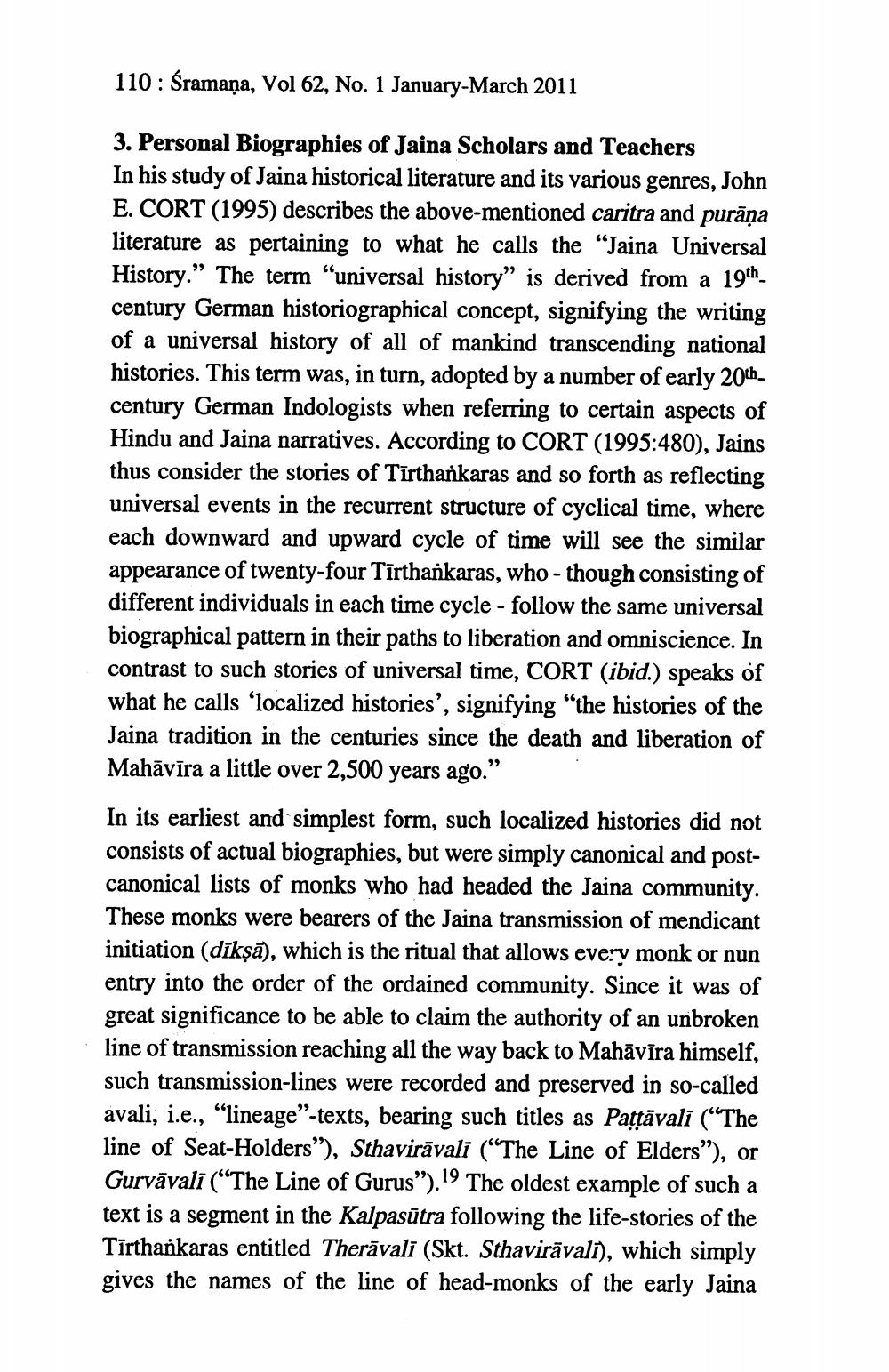________________
110: Śramaņa, Vol 62, No. 1 January-March 2011
3. Personal Biographies of Jaina Scholars and Teachers In his study of Jaina historical literature and its various genres, John E. CORT (1995) describes the above-mentioned caritra and purāņa literature as pertaining to what he calls the “Jaina Universal History.” The term "universal history” is derived from a 19thcentury German historiographical concept, signifying the writing of a universal history of all of mankind transcending national histories. This term was, in turn, adopted by a number of early 20th. century German Indologists when referring to certain aspects of Hindu and Jaina narratives. According to CORT (1995:480), Jains thus consider the stories of Tīrthankaras and so forth as reflecting universal events in the recurrent structure of cyclical time, where each downward and upward cycle of time will see the similar appearance of twenty-four Tīrthankaras, who-though consisting of different individuals in each time cycle - follow the same universal biographical pattern in their paths to liberation and omniscience. In contrast to such stories of universal time, CORT (ibid.) speaks of what he calls ‘localized histories', signifying "the histories of the Jaina tradition in the centuries since the death and liberation of Mahāvīra a little over 2,500 years ago.” In its earliest and simplest form, such localized histories did not consists of actual biographies, but were simply canonical and postcanonical lists of monks who had headed the Jaina community. These monks were bearers of the Jaina transmission of mendicant initiation (dīkņā), which is the ritual that allows every monk or nun entry into the order of the ordained community. Since it was of great significance to be able to claim the authority of an unbroken line of transmission reaching all the way back to Mahāvīra himself, such transmission-lines were recorded and preserved in so-called avali, i.e., “lineage”-texts, bearing such titles as Pattāvali (“The line of Seat-Holders”), Sthavirāvali (“The Line of Elders”), or Gurvāvali (“The Line of Gurus”).19 The oldest example of such a text is a segment in the Kalpasūtra following the life-stories of the Tīrthankaras entitled Therāvali (Skt. Sthavirāvali), which simply gives the names of the line of head-monks of the early Jaina




